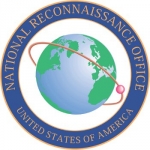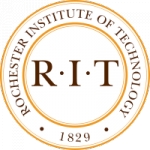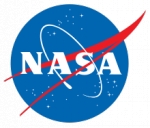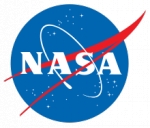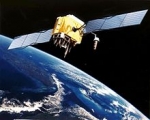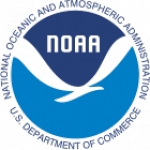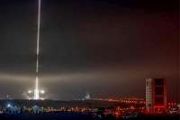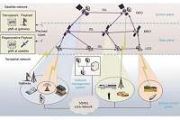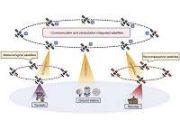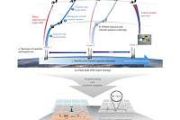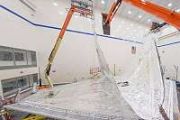Displaying items by tag: USA
National Reconnaissance Office (NRO)
The National Reconnaissance Office (NRO) is one of the 16 U.S. intelligence agencies and considered to be one of the "big five" U.S. Intelligence agencies, along with the Central Intelligence Agency (CIA), National Security Agency (NSA), Defense Intelligence Agency (DIA), and National Geospatial‐Intelligence Agency (NGA).
The NRO develops and operates space reconnaissance systems and conducts intelligence-related activities for U.S. national security. It also coordinates collection and analysis of information from airplane and satellite reconnaissance by the military services and the Central Intelligence Agency. It is funded through the National Reconnaissance Program, which is part of the National Intelligence Program. The agency is part of the Department of Defense. The NRO works closely with its intelligence and space partners, which include the National Security Agency (NSA), the National Geospatial-Intelligence Agency (NGA), the Central Intelligence Agency (CIA), the Defense Intelligence Agency (DIA), the United States Strategic Command, Naval Research Laboratory and other agencies and organizations. The NRO operates ground stations around the world that collect and distribute intelligence gathered from reconnaissance satellites.
The NRO is headquartered 2 miles (3 km) south of Washington Dulles International Airport. It designs, builds, and operates the spy satellites of the United States government, and provides satellite intelligence to several government agencies, particularly signals intelligence (SIGINT) to the NSA, imagery intelligence (IMINT) to the NGA, and measurement and signature intelligence (MASINT) to the DIA. The Director of the NRO reports to both the Director of National Intelligence and the Secretary of Defense and serves as Assistant Secretary of the Air Force (Intelligence Space Technology). The NRO's federal workforce consists primarily of Air Force, CIA, NGA, NSA, and Navy personnel. A 1996 bipartisan commission report described the NRO as having by far the largest budget of any intelligence agency, and "virtually no federal workforce", accomplishing most of its work through "thousands" of defense contractor personnel.
Commercial Spaceflight Federation (CSF)
The Commercial Spaceflight Federation is a private American spaceflight industry group, incorporated as an industry association for the purposes of establishing ever higher levels of safety for the commercial human spaceflight industry, sharing best practices and expertise, and promoting the growth of the industry worldwide.
Issues that the Commercial Spaceflight Federation work on include, but are not limited to, the STIM-Grants program for spaceport infrastructure, FAA regulations and permits, industry safety standards, public outreach, and public advocacy for the commercial space sector.
Its mission: "To promote the development of commercial human spaceflight, pursue ever higher levels of safety, and share best practices and expertise throughout the industry."
Rochester Institute of Technology (RIT)
Rochester Institute of Technology (RIT) is a private university located within the town of Henrietta in the Rochester, New York metropolitan area.
RIT is composed of nine academic colleges. It is widely known for its fine arts, computing, engineering, and imaging science programs.
RIT has collaborated with many industry players in the field of research as well, including IBM, Xerox, NASA, and the Defense Advanced Research Projects Agency (DARPA).
Iridium Communications Inc.
Iridium Communications Inc. is a company, based in McLean, Virginia, United States which operates the Iridium satellite constellation, a system of 66 active satellites used for worldwide voice and data communication from hand-heldsatellite phones and other transceiver units. The Iridium network is unique in that it covers the whole Earth, including poles, oceans and airways. The company derives its name from the chemical element iridium. The number of satellites projected in the early stages of planning was 77, the atomic number of iridium, evoking the metaphor of 77 electrons orbiting the nucleus.
National Space Society (NSS)
The National Space Society (NSS) is an American independent, educational, grassroots, non-profit organization dedicated to the creation of a spacefaring civilization. Founded as the National Space Institute (1974) and L5 Society (1975), which merged to form NSS in 1987 (seemerger proclamation), NSS is widely acknowledged as the preeminent citizen's voice on space.
NSS has over 12 thousand members (and more supporters) and over 50 chapters in the United States and around the world. The society also publishes Ad Astra magazine, an award-winning periodical chronicling the important developments in space.
American Institute of Aeronautics and Astronautics (AIAA)
The American Institute of Aeronautics and Astronautics is an American technical society dedicated to the global aerospace profession.
AIAA’s mission is to address the professional needs and interests of the past, current, and future aerospace workforce and to advance the state of aerospace science, engineering, technology, operations, and policy to benefit our global society.
Founded in 1963, the American Institute of Aeronautics and Astronautics has now (2012) more than 35,000 individual members and 90 corporate members. AIAA is one of the world’s largest technical society dedicated to the global aerospace profession. Created by the merger of the two great aerospace societies of the day, the American Rocket Society (founded in 1930 as the American Interplanetary Society), and the Institute of the Aerospace Sciences (established in 1933 as the Institute of the Aeronautical Sciences).
NASA - Johnson Space Center
The Lyndon B. Johnson Space Center (JSC) is the National Aeronautics and Space Administration's center for human spaceflight training, research and flight control. The center consists of a complex of 100 buildings constructed on 1,620 acres (656 ha) in Houston, Texas. Johnson Space Center is home to the United States astronaut corps and is responsible for training astronauts from both the U.S. and its international partners. It is often popularly referred to by its central function during missions, Mission Control.
The center, originally known as the Manned Spacecraft Center, grew out of the Space Task Group formed soon after the creation of NASA to co-ordinate the US manned spaceflight program. A new facility was constructed on land donated by Rice University and opened in 1963. On February 19, 1973, the center was renamed in honor of the late U.S. president and Texas native, Lyndon B. Johnson. JSC is one of ten major NASA field centers.
NASA - Kennedy Space Center
The John F. Kennedy Space Center (KSC) is the NASA installation that has been the launch site for every United States human space flight since 1968. Although such flights are currently on hiatus, KSC continues to manage and operate unmanned rocket launch facilities for America's civilian space program from three pads at the adjoining Cape Canaveral Air Force Station. Its iconic Vehicle Assembly Building (VAB) is the fourth-largest structure in the world by volume and was the largest when completed in 1965.
Global Positioning System (GPS)
The Global Positioning System (GPS) is a space-based satellite navigation system that provideslocation and time information in all weather, anywhere on or near the Earth, where there is an unobstructed line of sight to four or more GPS satellites. It is maintained by the United Statesgovernment and is freely accessible by anyone with a GPS receiver with some technical limitations which are only removed for military users.
The GPS program provides critical capabilities to military, civil and commercial users around the world. It is an engine of economic growth and jobs, and has generated billions of dollars of economic activity. It maintains future warfighter advantage over opponents and is one of the four core military capabilities. In addition, GPS is the backbone for modernizing the global air traffic system.
The GPS project was developed in 1973 to overcome the limitations of previous navigation systems, integrating ideas from several predecessors, including a number of classified engineering design studies from the 1960s. GPS was created and realized by the U.S. Department of Defense (DoD) and was originally run with 24 satellites. It became fully operational in 1994.
Advances in technology and new demands on the existing system have now led to efforts to modernize the GPS system and implement the next generation of GPS III satellites and Next Generation Operational Control System (OCX). Announcements from the Vice President and the White House in 1998 initiated these changes. In 2000, U.S. Congress authorized the modernization effort, referred to as GPS III.
In addition to GPS, other systems are in use or under development. The Russian GLObal NAvigation Satellite System (GLONASS) was in use by only the Russian military, until it was made fully available to civilians in 2007. There are also the planned European Union Galileo positioning system, Chinese Compass navigation system, and Indian Regional Navigational Satellite System.

